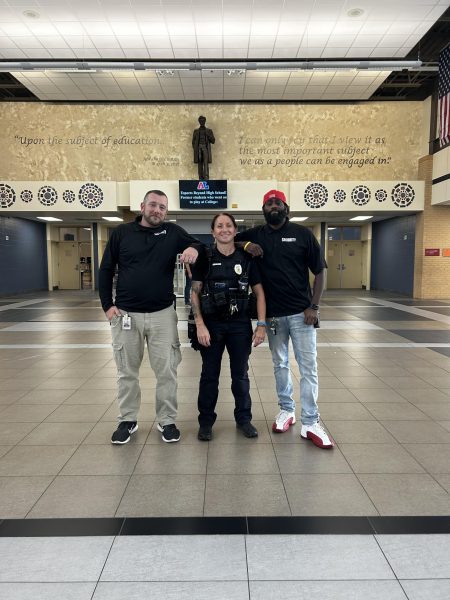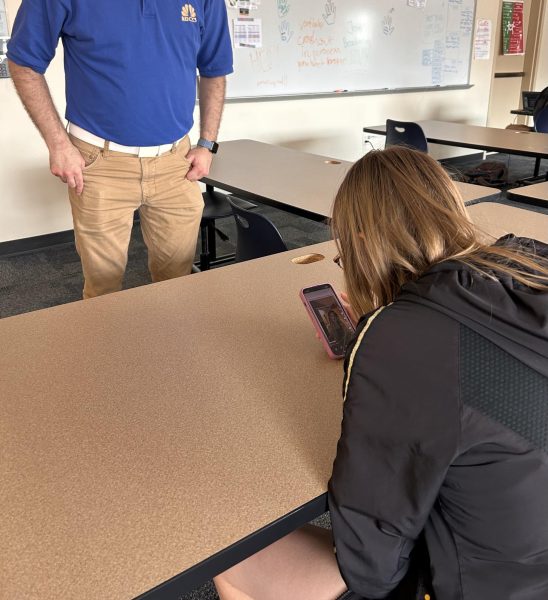CBCSD working to keep students and staff safe
It is an ongoing process to ensure the schools are open with as many safety precautions as possible. For some students, what this looks like has already changed since the beginning of the year, with parents being allowed to choose between hybrid and online, and the recent addition of the onsite option.
This addition of the onsite option, left some questioning what would be done to ensure this was a safe option.
“We are now following new mask guidelines from the local county and Iowa Department of Public Health departments,” superintendent of schools Dr. Vickie Murillo told the Echoes in an email interview.
Murillo said these guidelines are in accordance with the new onsite learning option. “Under these ‘mask crediting’ guidelines, students who are wearing masks do not need to quarantine and stay home from school even if they have recently been in close contact (<6 feet ≥15 minutes) at school with someone who tests positive for COVID but was also wearing a mask.”
ALHS Principal Bridgette Bellows outlined the protocol for students that do need to quarantine, either due to exposure or a positive test result. Bellows said that the general quarantine requirement for a positive test result is 10 days, but that a person must go a certain amount of time without symptoms before they are allowed back in the building. As far as exposure when masks are not worn, the requirement is generally 14 days. Staff follows the same quarantine guidelines as students.
“I would continue to remind students that if they aren’t feeling well to stay home,” Bellows said. “I would also remind them that if someone in their immediate household is getting tested for COVID-19, the student should stay home until that test result is back and then if it is positive, the student needs to quarantine.”
Teachers within many schools in the district, including at ALHS, are instructed to ensure all guidelines are followed within their own classrooms, while still offering successful learning opportunities.
Engineering teacher Ryan Higgins has been experiencing this firsthand. He notes that he has certain seats marked off to promote social distancing but things can become more difficult
with the engineering equipment.
“I have also tried to split up the equipment as much as possible so that people aren’t sharing things as much,” Higgins said. “We normally have a lot of group activities, but I have had to keep those groups very small.”
Due to many engineering assignments being material-reliant, Higgins said that he has also been running two lessons in his classroom each day, one for the students that are in person and another for the students learning from home.
School administrators such as Bellows, have recognized the effort being put in by staff and students to follow the guidelines they are given.
“Students and staff have done an outstanding job of meeting the new expectations for wearing masks, trying to maintain distance, and keeping hands clean,” Bellows says.
Murillo also said that she felt it was important for parents to have the option between the three phases of learning the district has outlined in their “Return to Learn” plan, Onsite, Hybrid, and Remote.
“At no time was the plan created for us to select one phase and remain there for the entire year,” Murillo said.
Bellows agreed that this decision should be made on a case by case basis.
“I think performing better remotely vs. on-site depends on the individual,” Bellows said. “Some students are capable of learning better from behind the screen with fewer distractions and perhaps a quieter place to work but others need to face to face interaction.”
Some parents have also expressed concerns over how lunches are working this school year because students cannot wear masks while eating. Bellows said that the students at each table are assigned and limited in number, and that students are asked to put their masks back on whenever they are not eating.
Many teachers such as Higgins feel that overall, students benefit from attending school in person as much as possible as long as safety is considered.
“For strictly educational purposes, it is obviously better to have students in the building full time,” Higgins said. “There are very few students who fully engage themselves in the lesson while at home with little or no supervision. It is also harder to help students one-on-one while they’re at home.”
Murillo highlighted that the district has launched a campaign called the “Together We Can” campaign, with hopes to encourage students to wear masks and keep their peers safe. This campaign includes videos and posters that are accessible and visible for staff and students in the district, with the faces of the campaign being high school students from AL,TJ, and Lewis Central.
Reporter Stephanie Green also contributed to this article







